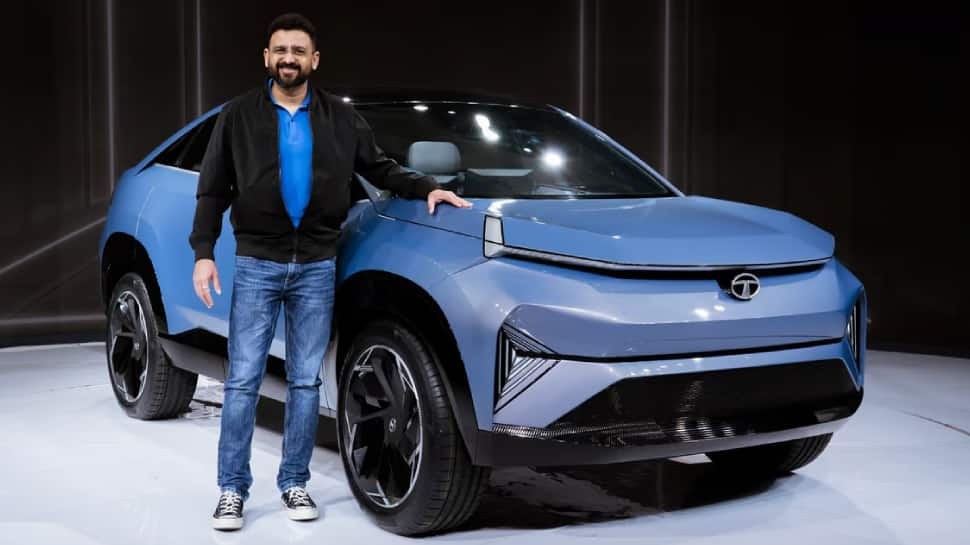Tata Motors’ Vivek Srivatsa Interview: Tata Motors has established itself as a company that builds safe vehicles. From the Nexon to the Safari, most of the company’s vehicles have received 5-star safety ratings. The Tata Nexon was the first car in India to achieve a 5-star safety rating, and since then, Tata Motors has consistently advanced in terms of safety. We recently had the opportunity to interview Vivek Srivatsa, Chief Commercial Officer of Tata Passenger Electric Mobility Ltd. Read the full interview below.
How Is Tata Motors Contributing To Vehicle Safety?
Vivek Srivatsa said, “6-7 years ago, no one really cared about safety. It was only in 2018, when the Nexon got a 5-star safety rating, that people started recognizing safety as an important parameter. Since then, we’ve remained committed: first with the Nexon, followed by the Altroz, which achieved a 5-star safety rating at launch, making it the only hatchback to do so.”
“The Punch also received 5 stars, and the Tigor earned 4 stars, despite being in a very competitive pricing category. We’ve also led the way with B-NCAP ratings, where the Harrier and Safari scored the highest marks. But we’re not stopping here — very soon, we’ll have more news to share with you,” he added.
How important is safe driving along with having safe vehicles?
Srivatsa said, “If we talk about safety in India, we need both safe vehicles and safe driving. It’s very saddening that there is a lack of concern for safety and human life. Many new roads are being constructed, which has led to an increase in speed, but the discipline of people on the roads is decreasing. Every year, we unfortunately lead in road safety deaths and fatalities. So, while car safety is important, we also need to improve driving safety as a society.”
How is Tata Motors advancing features in its vehicles?
He said, “We have introduced advanced infotainment and electronics-based features to the Nexon, Harrier, and Safari. We’ve gone ahead with larger screens, more functionalities, 360-degree cameras, improved sound quality, and advanced active safety systems. We’ve come a long way from the current industry standard.”
“A lot of software is involved in these features, making them highly software-oriented. We’ve also upgraded our headlamp lighting technology, adding LED lights, DRLs, fog lamps, and tail lamps. LEDs offer two key advantages: lower power consumption and improved safety due to higher light output and reduced heat generation,” Srivatsa added.
Srivatsa said, “Additionally, the Altroz now comes with 6 airbags and electronic stability programs (ESP). In 2020, we standardized ESP in the Nexon, even in the lowest variant, at a time when ESP was available only in high-end cars across the industry. While we’ve introduced many features, our main focus remains on safety and infotainment, which have become part of Tata Motors’ DNA.”
Why are car prices skyrocketing?
Vivek Srivatsa said, “If you see, the automotive costs are rising, and the overall industry’s expenses are increasing, but the desirability of products is growing even faster than the costs. Customers believe they’re getting good value for their money. If you compare entry-level car prices from 5-6 years ago to now, they have almost doubled. In contrast, premium car prices haven’t risen as sharply, making the added features on higher-end models feel completely worth the price.”
Srivatsa said, “If we look at the industry, it keeps evolving, and what was considered the sweet spot of the market 5 years ago, around Rs 6 lakhs, is now about Rs 10 lakhs —almost double, reflecting industry growth. Customers now receive full value for their money, with all the features and luxury materials included.”
“India’s economy is rapidly developing, and most of the population is experiencing rising income and disposable income, which reflects a higher standard of living in every aspect, including in automotive purchases. Additionally, buying a car in India is more of an emotional decision than a practical one,” he added.
Is adding more features to vehicles making it harder to keep prices in check?
He said, “This is a balancing act. For instance, if we look at the hatchback segment, its contribution is decreasing, and recently it accounts for only 27% of the industry. Within this, the premium hatchback category contributes the most, with almost 35% of hatchback sales coming from premium models. This is the only segment showing growth within the hatchback category.”
“So, customers are saying- give us a hatchback, but we want premium features like ride quality, engine power output, comfort, and safety. They want the hatchback shape but with many features and a comfort-oriented drive. The performance of the hatchback segment, in terms of numbers, is increasing in this direction.”
“Yes, the hatchback category is highly price-sensitive, and at the same time, offering just a basic hatchback doesn’t excite customers or drive sales. So, it’s a balancing game,” Vivek Srivatsa added.
What is Tata Motors doing to improve after-sales service as people complain about it?
Vivek Srivatsa said, “From 2020 until now, we’ve grown our market share almost threefold. We went from around 5% to approximately 14% market share. Our sales numbers, which were around 15,000 units, have now reached 50,000. This growth isn’t because we launched too many new models—there are only two new names, Safari and Punch. The rest of the range remains the same as in 2020. Such growth wouldn’t be possible if our service and quality weren’t good.
He said, “One issue we’ve identified is that our sales growth may have outpaced the expansion of our service centers. The increased demand has put pressure on our service centers, leading to longer waiting periods for appointments and issues with service quality. We recognize this problem, and we are committed to solving it. However, we believe the issue has been blown out of proportion due to negative hype.”

